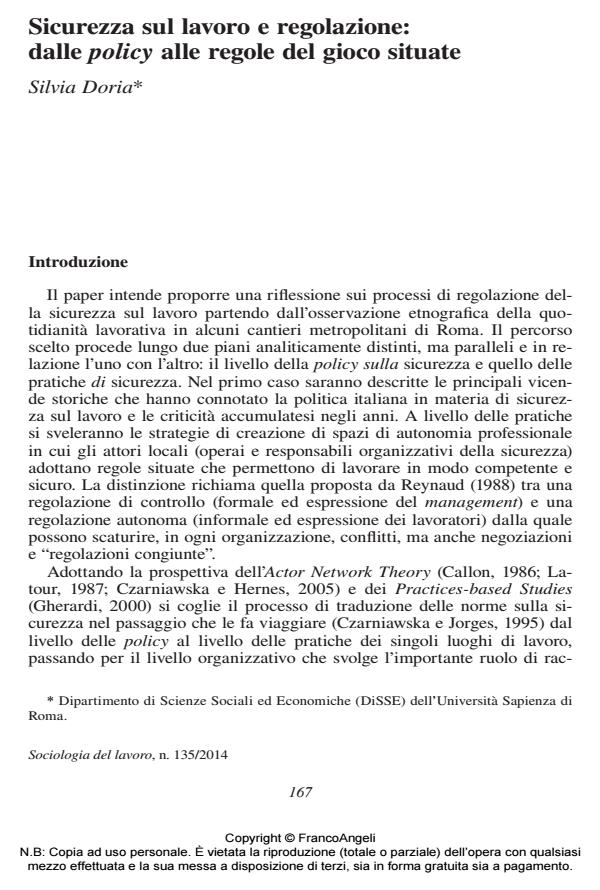Workplace safety and regulation: from policy to situated game rules
Journal title SOCIOLOGIA DEL LAVORO
Author/s Silvia Doria
Publishing Year 2014 Issue 2014/135
Language Italian Pages 15 P. 167-181 File size 113 KB
DOI 10.3280/SL2014-135010
DOI is like a bar code for intellectual property: to have more infomation
click here
Below, you can see the article first page
If you want to buy this article in PDF format, you can do it, following the instructions to buy download credits

FrancoAngeli is member of Publishers International Linking Association, Inc (PILA), a not-for-profit association which run the CrossRef service enabling links to and from online scholarly content.
The paper proposes a reflection on the theme of safety in the workplace and its regulation through ethnographic observation of some urban sites. This contribution is part of a wider research. Following a Practice-based Studies perspective (Gherardi, 2000), the research focused on the practices of safety under construction, both as construction industry and as the process by which the daily safety is put into practice and re-built in the relationships and interactions involving different actors. These actors, in fact, are characterized by a specific professional vision (Goodwin, 1994) of what is or is not safe in the local context in which they work. Starting from these considerations, the author aims to show that in the case of workplace safety regulation "failure/betrayal" spaces - in the relationship between different institutional actors at different levels of regulation (ILO, European Union, Italian Governments for example) - coexist with spaces of alternative, creative and collective creation of situated game rules (in a specific workplace) that allow to work safely.
Keywords: Workplace safety, regulation, construction site, situated game rules, situated practices, ethnography
- Il Pos: artefatti che (dis)organizzano la sicurezza Silvia Doria, in STUDI ORGANIZZATIVI 1/2015 pp.76
DOI: 10.3280/SO2015-001004
Silvia Doria, Sicurezza sul lavoro e regolazione: dalle policy alle regole del gioco situate in "SOCIOLOGIA DEL LAVORO " 135/2014, pp 167-181, DOI: 10.3280/SL2014-135010